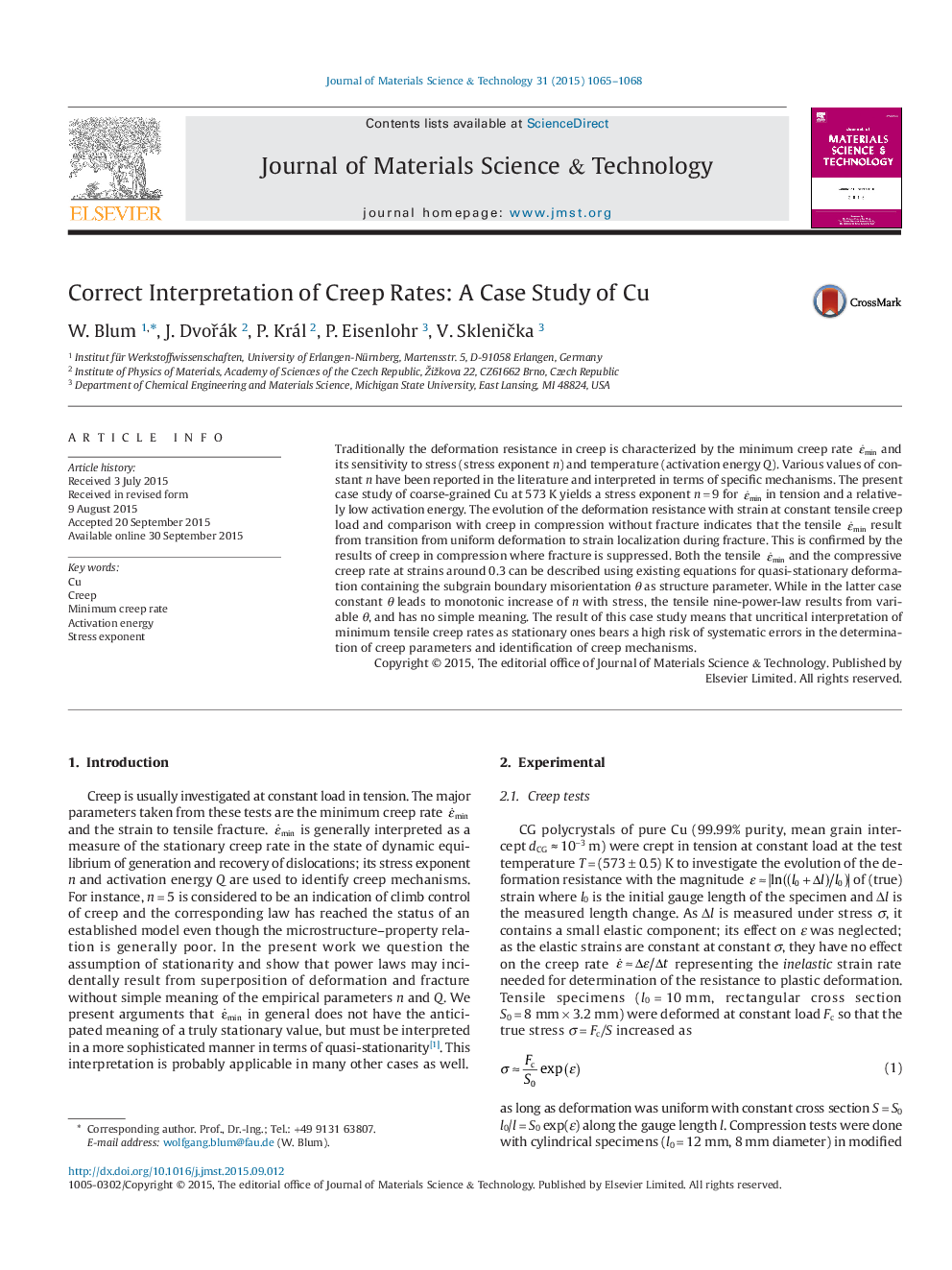| Article ID | Journal | Published Year | Pages | File Type |
|---|---|---|---|---|
| 1555791 | Journal of Materials Science & Technology | 2015 | 4 Pages |
Traditionally the deformation resistance in creep is characterized by the minimum creep rate ε˙min and its sensitivity to stress (stress exponent n) and temperature (activation energy Q). Various values of constant n have been reported in the literature and interpreted in terms of specific mechanisms. The present case study of coarse-grained Cu at 573 K yields a stress exponent n = 9 for ε˙min in tension and a relatively low activation energy. The evolution of the deformation resistance with strain at constant tensile creep load and comparison with creep in compression without fracture indicates that the tensile ε˙min result from transition from uniform deformation to strain localization during fracture. This is confirmed by the results of creep in compression where fracture is suppressed. Both the tensile ε˙min and the compressive creep rate at strains around 0.3 can be described using existing equations for quasi-stationary deformation containing the subgrain boundary misorientation θ as structure parameter. While in the latter case constant θ leads to monotonic increase of n with stress, the tensile nine-power-law results from variable θ, and has no simple meaning. The result of this case study means that uncritical interpretation of minimum tensile creep rates as stationary ones bears a high risk of systematic errors in the determination of creep parameters and identification of creep mechanisms.
